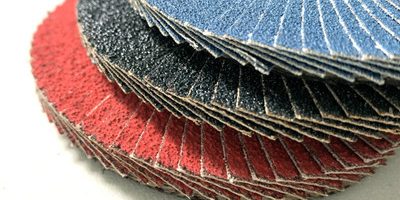Woodworking projects often require a high level of precision and a smooth finish, making sanding discs an invaluable tool in a woodworker’s arsenal. Choosing the right sanding discs and using them effectively can significantly impact the quality of your wood surface finishing. In this blog, we’ll explore how to achieve efficient wood surface finishing with sanding discs.
- Select the Right Grit: Start by choosing the appropriate grit size for your sanding disc. Coarser grits (e.g., 80 to 120) are suitable for material removal, such as leveling surfaces or removing old finishes. Medium to fine grits (e.g., 150 to 220) are ideal for general smoothing and preparation. Finer grits (e.g., 320 to 400) are for achieving a smooth surface for staining or finishing.
- Use the Right Disc Type: Sanding discs come in various types, including aluminum oxide, silicon carbide, and zirconia alumina. Select the type that best matches your wood type and sanding needs. For example, silicon carbide discs are great for hardwoods, while aluminum oxide discs are versatile for a wide range of wood materials.
- Inspect and Prepare the Wood: Before sanding, inspect the wood for any imperfections, knots, or rough spots. Address any issues by filling gaps or repairing defects. Proper wood preparation ensures smoother sanding.
- Progressive Sanding: Start with a coarser grit sanding disc and progressively work your way to finer grits. This gradual approach ensures effective material removal and a smoother finish with each step.
- Sanding Technique: Use light to moderate pressure when sanding to prevent over-sanding or creating uneven surfaces. Move the sanding disc evenly across the wood grain, and avoid staying in one spot for too long.
- Dust Management: Wood sanding generates a significant amount of dust. Wear appropriate personal protective equipment (PPE), including a dust mask, safety glasses, and hearing protection. Use dust extraction systems or work in a well-ventilated area to minimize dust buildup.
- Final Sanding: For the finest finish, use a very fine grit sanding disc (e.g., 320 to 400) for a final pass. This step ensures that the wood is smooth and ready for staining or finishing.
- Clean the Surface: After sanding, clean the wood surface thoroughly to remove all dust and debris. A clean surface ensures better adhesion for stains and finishes.
By following these tips and using the right sanding discs and techniques, you can achieve efficient and high-quality wood surface finishing in your woodworking projects. Whether you’re a professional woodworker or a DIY enthusiast, the proper use of sanding discs can make a significant difference in the outcome of your woodworking endeavors.










